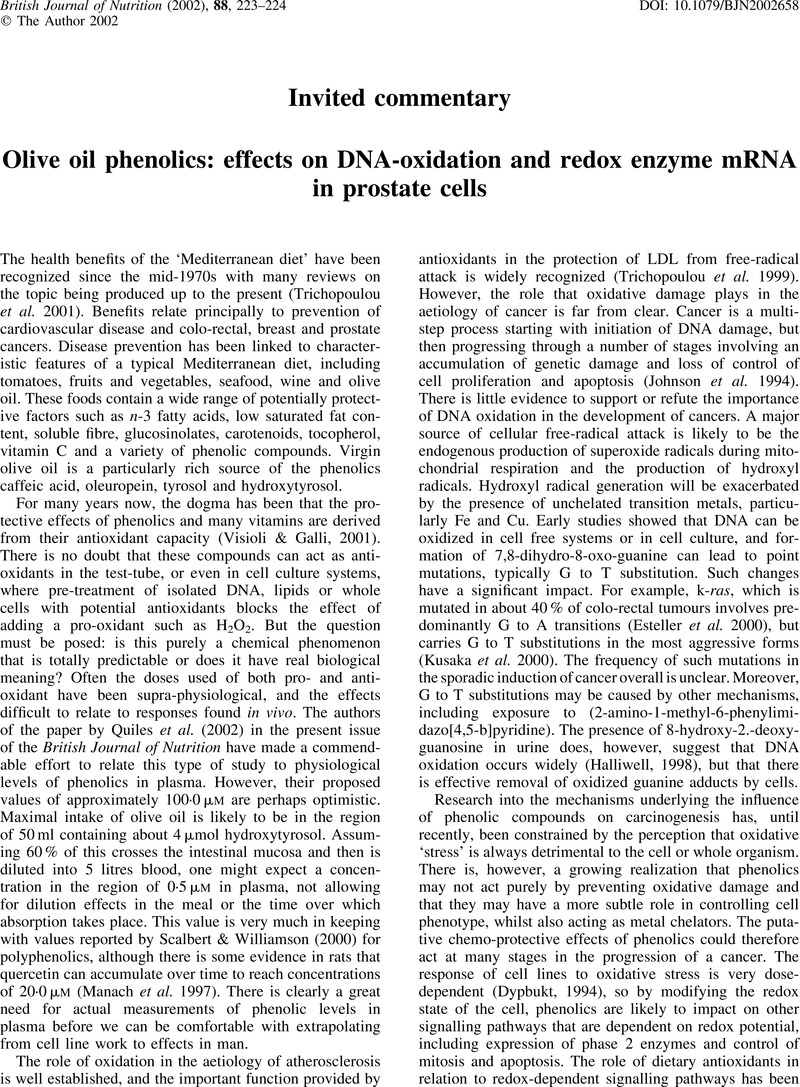Crossref Citations
This article has been cited by the following publications. This list is generated based on data provided by Crossref.
Hashim, Yumi Z.H.Y.
Eng, M.
Gill, Chris I.R.
McGlynn, Hugh
and
Rowland, Ian R.
2005.
Components of Olive Oil and Chemoprevention of Colorectal Cancer.
Nutrition Reviews,
Vol. 63,
Issue. 11,
p.
374.
Conlan, Xavier A.
Stupka, Nicole
McDermott, Geoffrey P.
Barnett, Neil W.
and
Francis, Paul S.
2010.
Correlation between acidic potassium permanganate chemiluminescence and in vitrocell culture assay: Physiologically meaningful antioxidant activity.
Anal. Methods,
Vol. 2,
Issue. 2,
p.
171.



